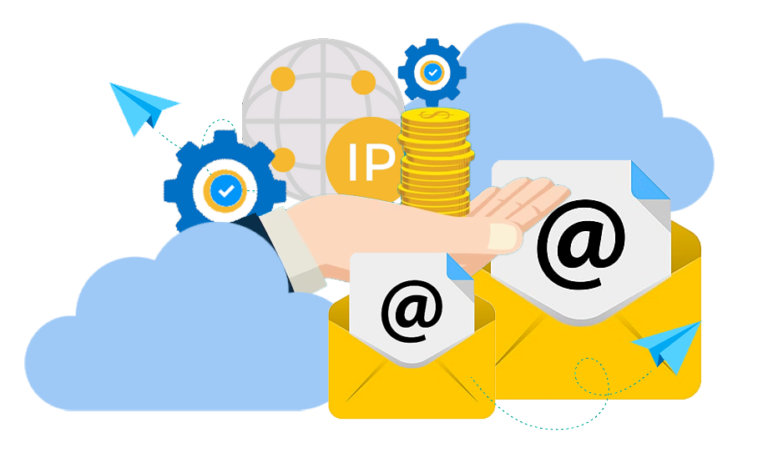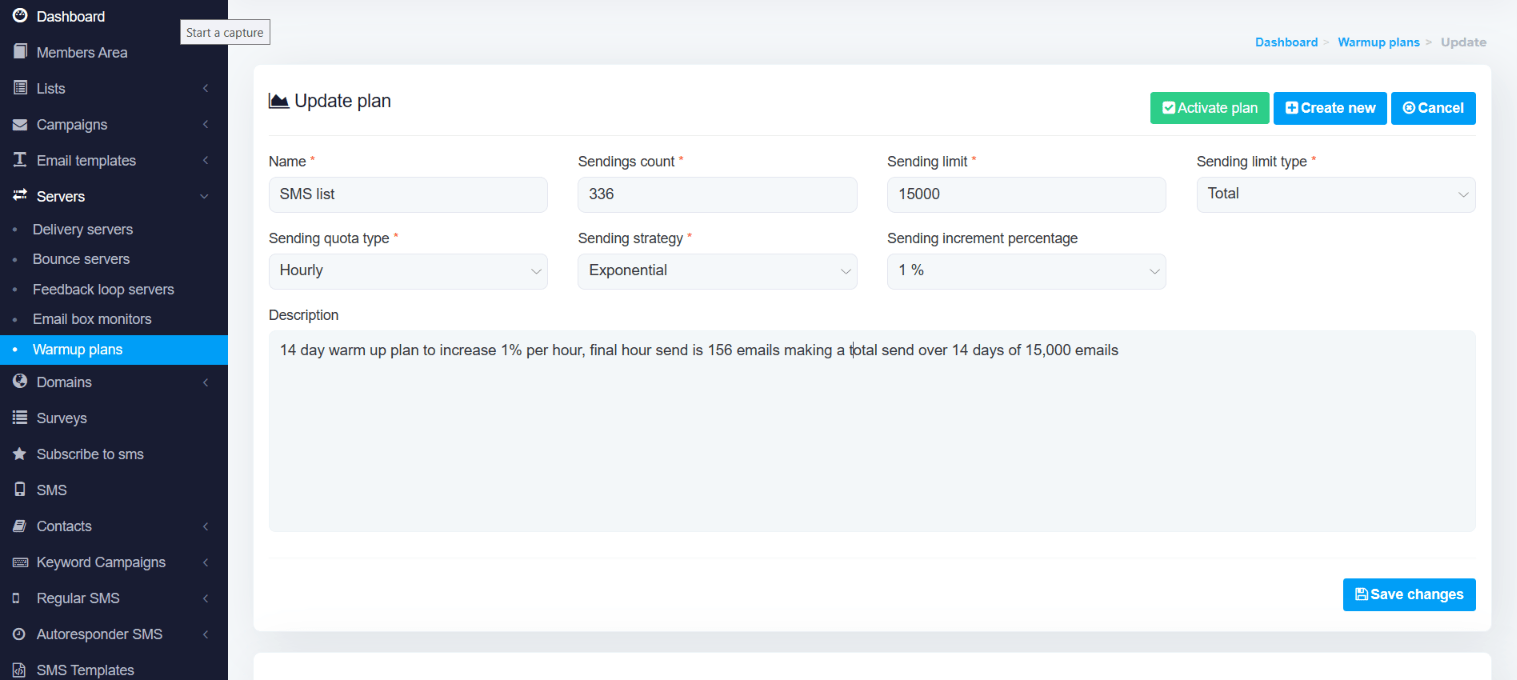IP Warm Up
What is an IP and Why Warm It Up?
An IP address is a unique string of numbers that identifies your email domain. An IP address is one of the most important factors that determine your sending reputation.
ISPs use your IP address to identify you as a sender, track sending behaviour, and assign an IP reputation score. Better behaviour results in higher delivery rates.

A dedicated IP is recommended if you are sending more than a few thousand emails each month.
Inboxingprohost combined and SMTP customers are assigned a dedicated IP and it is important to follow the warmup process for all new domains because a new IP address doesn’t have a reputation score since mail hasn’t been sent from it yet.
A new IP is considered “cold.” So how do you get your email delivered with a cold IP with zero sending reputation? The answer is…warm it up!
Warming up an IP address involves sending low volumes of email on your dedicated IP and then systematically increasing your email volume over a period.
Doing so provides ISPs the opportunity to recognize, identify, and evaluate your sending practices before giving the green light to your entire email list.
The primary goal of an IP warmup is to ramp up your sending volume to your anticipated “normal” levels.
You want the ISPs to learn your usual sending volumes so they can identify any suspicious behaviour. Spammers often infiltrate inboxes with malicious email by frequently switching IPs to circumvent ISP security checkpoints.
IP warming is the process of methodically adding campaign volume week-over-week to a new IP Address to establish a positive sending reputation with Internet Services Providers. (ISPs)
ISPs view email from a new IP address as suspicious until they establish a positive sending reputation.
It takes 4-8 weeks to achieve maximum deliverability (depending on targeted volume and engagement).
Warming could take longer if receivers don’t perceive an email as opt-in.
Certain receivers limit senders to thresholds until they build a sender reputation.
DNS Records
Make sure your authentication records are correct and in place. Email authentication is crucial to the success of your IP warming efforts, so you need to configure your SPF and DKIM records and implement DMARC
Check the pointer (PTR) record for your IP. The PTR record points from the IP address to the domain for a reverse DNS (Domain Name System) lookup. When an email is received, the mail server uses the PTR record in the email to check that the sending mail server matches the IP it claims to be using.
The PTR record goes in the reverse DNS zone but, in most cases, your Email Service Provider (ESP) or Internet Service Provider (ISP) will do this for you. You can check if a PTR record has been created with the reverse lookup tool from MXToolBox.
Postmaster Tools
Sign up to Microsoft Smart Network Data Services (SNDS) and Google Postmaster Tools. As well as allowing you to manage feedback loop settings for Outlook and Gmail, SNDS and Postmaster Tools provide detailed IP data which will enable you to monitor IP reputation.
List Hygine
Clean your email list. IP warming doesn’t only depend on gradually increasing your sending volume. It also depends on engagement from subscribers; ISPs need to know that your list is full of subscribers that opted in, and that you’re sending them what you promised.
The best indicators of this are your engagement metrics, like your email open rate and click rate. They also look at whether people delete or move your email to their spam folder. So before you start sending, it’s super important to run your email list through an email validation tool. This will remove any nasties that might harm your engagement and sending reputation.
Segment your most engaged subscribers. Since engagement is an important part of warming up your IP, it makes sense to start out by sending to your most engaged subscribers. For example, create segments of subscribers who have opened and/or clicked in the last 30, 60, 90 and 180 days.
Begin sending to the subscribers in the 30 day segment, and then gradually add in the lesser engaged ones in the other segments as you progress. Keep each addition to a maximum of 15% of the existing volume, so their effect doesn’t outweigh that of the engaged subscribers.
Create the best content
Craft engaging content. Take a look at your most successful email campaigns—which ones got the highest open rate and click rate? What do they have in common? Think about the types of content your subscribers like and engage with, and base your emails on this. And remember: When in doubt, just ask! Implement a survey in the newsletter or ask people to reply with their feedback.
Allow people to easily unsubscribe. Including an unsubscribe link in your marketing emails is mandatory. But, it will also keep your email list healthy by giving subscribers an alternative to flagging your emails as spam—they can simply opt-out.
What to expect during IP warming
When you start to warm up your IP, there are some key things that are important to remember:
The warm-up period will take a minimum of 30 days, depending on how frequently you send, the quality of your email list, and volume of emails
Gmail, Outlook, Yahoo and AOL generally take longer to warm-up
You need to constantly monitor and act on spam complaints, bounce rate and low engagement
Keep sending even if immediate results aren’t positive. What’s important is to address any issues, not to stop sending
Some bulking/blocking can be expected in the beginning—don’t be discouraged!
So let’s take a look at what you can do to counteract any issues.
Deliverability issues
Monitor for bounces and any other email deliverability issues and, if you notice anything, keep sending but pause on increasing your sending volume until spam filters get used to the IP. Pay attention to spam complaints and remove them from your list immediately.
Emails blocked due to low engagement
If email engagement is low, ISPs may reject your emails. The best way to counteract this is to check the list you’re sending to and clean it up, if necessary. If you’ve accidentally sent emails to unengaged subscribers or dirty email addresses, pause increasing your sending volume for a few days to reassure spam filters. If all is good, and you’re sending to the correct list, use segmentation to further whittle down subscribers to the very most engaged.
Also, check your email content. Could it be more engaging? Optimize your emails for more opens and clicks.
ISPs testing your emails
Some ISPs will label a portion of your emails as spam to test whether subscribers label it as “Not spam”. If subscribers do this, it’s an excellent indicator that you’re a legitimate email sender, and people want to receive your emails. It’s important to send your best-performing types of campaigns to actively engaged subscribers to combat this.
Warm up plan
If you are using our autoresponder, we have a warmup feature that automates the process
You can simply select the number of hours to run the campaign in the sender count
The number of subscribers to target as the sender limit and how you want to deliver the campaign using the sending strategy
Select linear which delivers the emails at the same hourly rate over the duration of the sender count or you can select Exponential which slowly increases the sending volumes and this is recommended for bigger lists

If you are not using our autoresponder and you have an engaged list that is permission based and has been cleaned, the following plan is recommended as the most aggressive option, scaling back on this plan is recommended for less engaged lists
Slow and steady is the key to a successful warm up process
It is tempting to rush the process but that is not going to work nearly as well as taking the required time to run the process
It depends on the size of your list as to the number of days and we suggest everyone follows the simple process and scale up or down based on the list size
Day 1 50
Day 2 100
Day 3 200
Day 4 300
Day 5 400
Day 6 500
Day 7 600
Day 8 900
Day 9 1200
Day 10 1500
Day 11 2000
Day 12 2500
Day 13 3000
Day 14 4000
Day 15
Providing the previous 14 days have good engagement and no blocks or blacklisting issues you can double the previous days volume up to your target list size
